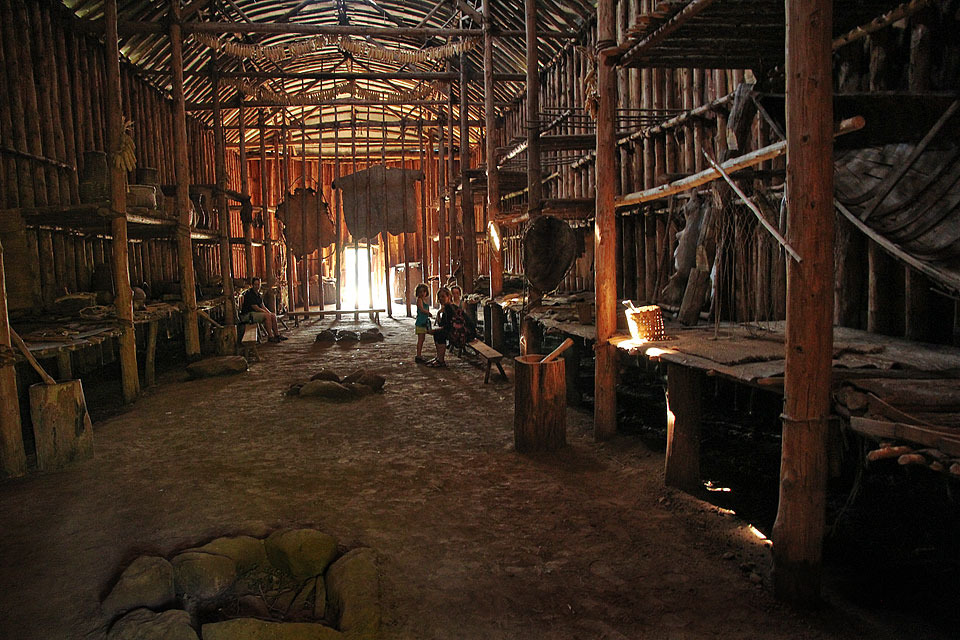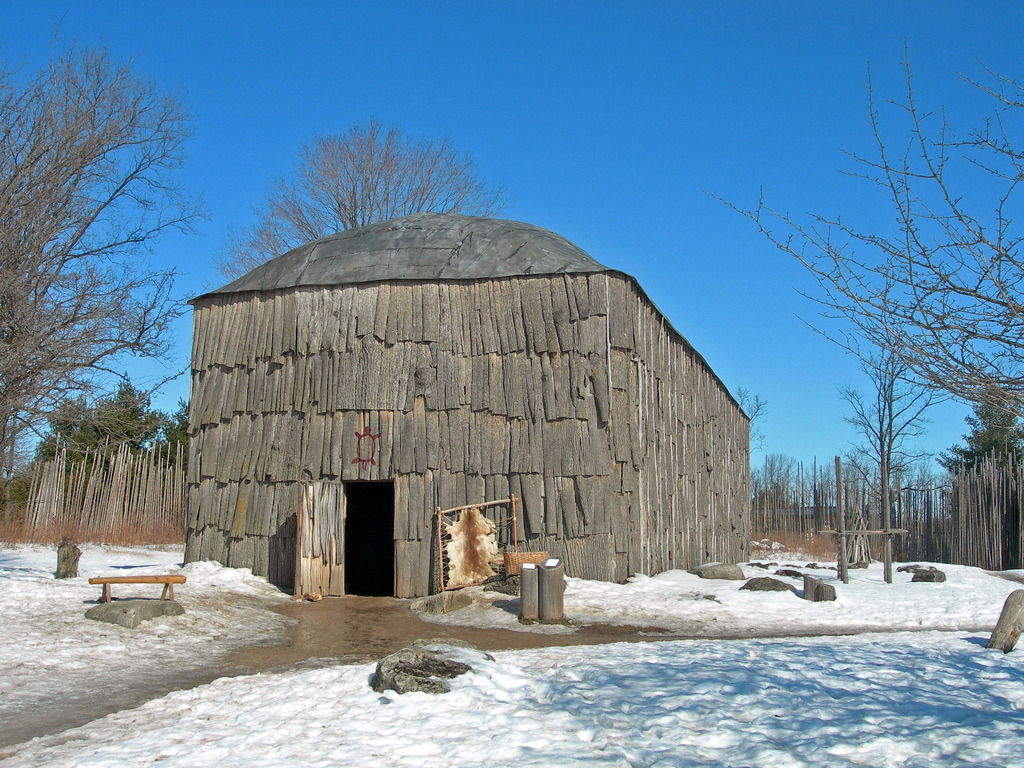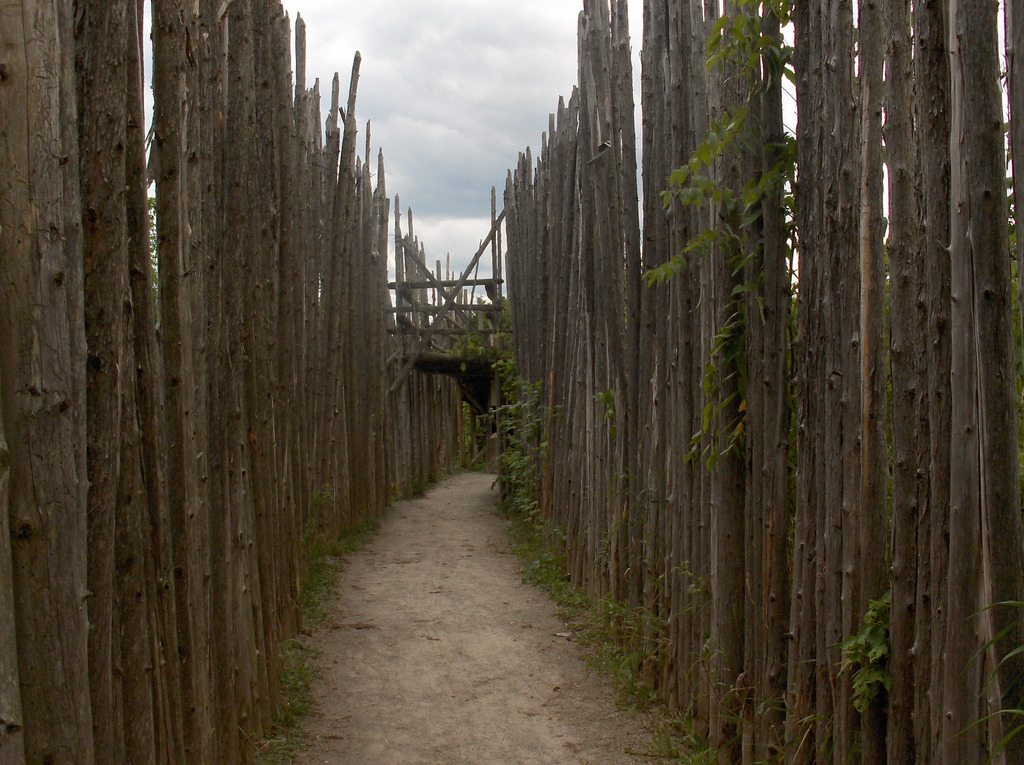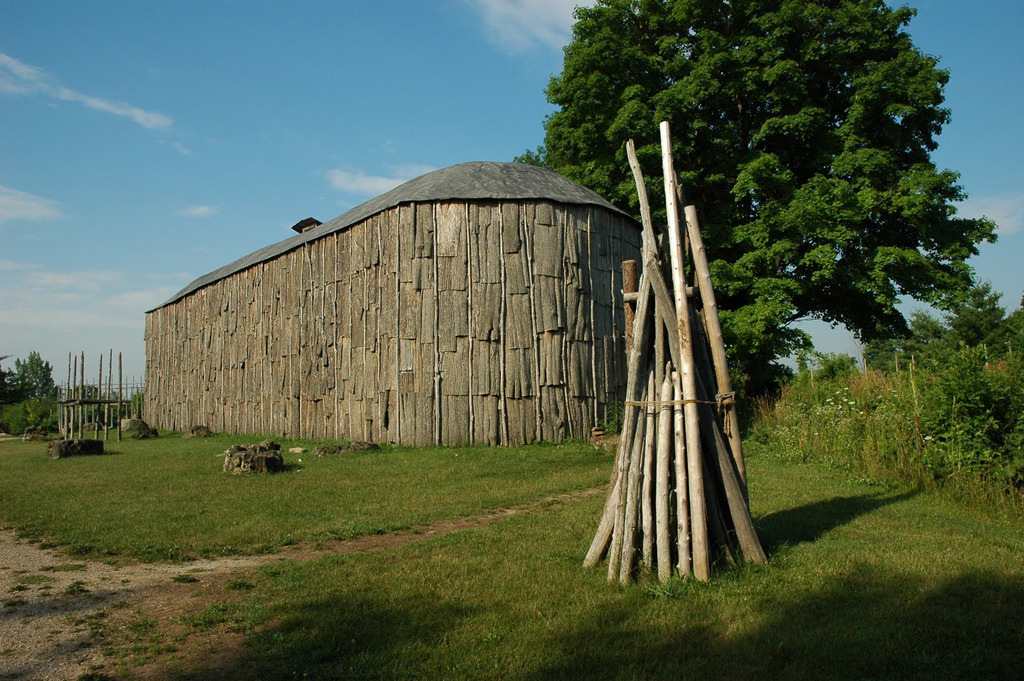V 02 |
Iroquois longhouse |
type |
|
place |
|
population |
The word Iroquois derives from the language of a rival tribe, the Algonquin, and means murderous tribe. Their own name for themselves (Haudenosaunee: the builders of longhouse) is less fearsome, and vividly differentiates them from the other native American tribes who lived in huts (wigwam, wickiup) and tents (tipi).
When the longhouses were in use 1 clan of 10 families lived in each house, although the number could exceed this by several times. Women had the power in the house and they inherited the family’s wealth. The husband would move in with them when they married (not the other way round) and if he did not prove hard-working enough he could be cast out, with little fuss.
The women’s task, apart from housework and raising children was to forage and cultivate crops (corn, beans and squash). The men conferred, warred, hunted and fished and, last but not least, built houses. The houses were 6-7 metres wide and a similar height, and they varied in length from 12-122 metres. They were typically divided into 6 metre long sections, which one family lived on each side of with a common fireplace in the middle.
The frame of the building was made of wood and roofed with elm bark. There was a door at each end of the house and a hole to let the smoke out was let into the roof above each hearth which also provided ventilation. A longhouse usually lasted about twenty years. An Iroquois village was made up of several clans’ longhouses surrounded by a 4-5 metre high palisade of sharpened tree trunks. One hundred years ago the Iroquois longhouses evolved and were built with gabled roofs before they stopped being built altogether. Examples of these longhouses which can be seen today are reconstructions.
(Crawford Lake Indian Village Site, Wolf clan, Turtle clan house)




